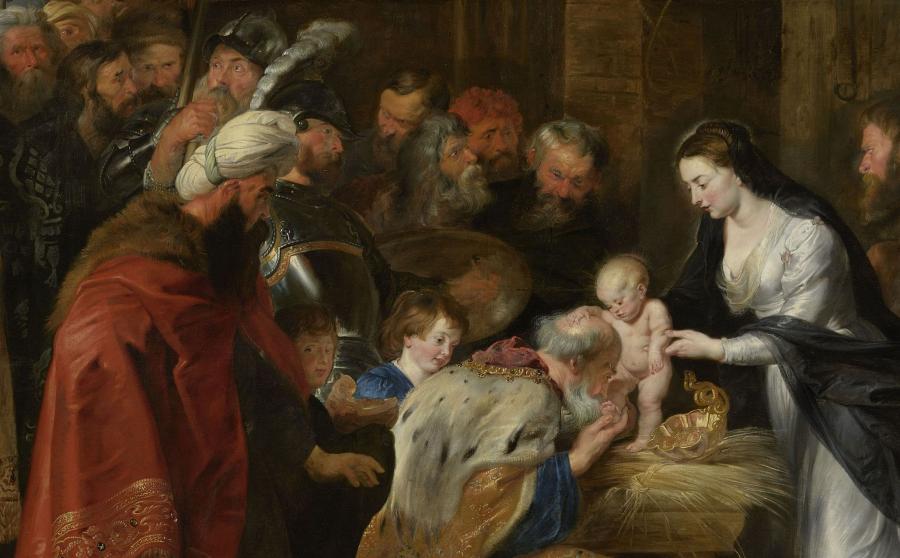The Adoration of the Magi
Information sur l’artiste
Pierre-Paul Rubens [Siegen, 1577 - Anvers, 1640]

L' Adoration des mages, vers 1617-1618.
Image © Lyon MBA - Photo Alain Basset
Supported by his mother, the tiny infant leans on the bald head of the king kneeling before him and respectfully kissing his foot. Although it has been depicted many times, rarely has the scene of the Adoration of the Magi been done with such humanity and sumptuousness. Mary and Joseph have taken refuge in a cave fitted out as a stable. A shed made of brick and wood can be seen in the background. The humble straw bed of the manger contrasts with the magnificence of the gadrooned goblet filled with gold coins and the sparkling robes of these visitors from far away: rich, fur-trimmed cloaks, a tunic with golden highlights, brocade and damask. Placed along the same oblique line, the kings undoubtedly represent the three ages of man. Near them, servants bring royal offerings. In the background, soldiers and onlookers, who are crowded together in a small space, make up a heterogeneous group with varied poses and expressions. Lost in the shadows in the middle of the crowd, a young boy carries myrrh and looks out at us. There are strong and contrasting colors, textural effects and a dense composition. Using diagonals and arabesques that tie together figures and planes, Rubens has created here a composition with a Baroque inspiration. The Flemish artist painted this subject many times. This painting, which dates from 1617-1618, was probably meant for a private collection because its width is not appropriate for decorating an altar. The painting achieved considerable acclaim, thanks to engraved reproductions and tapestries.
Around 1617-1618
Oil on canvas
H. 251; W. 328 cm
Sent by the French state





